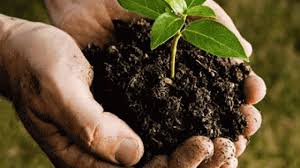BY CHIMA NWAFO
A hungry man, they say, is an angry man. Much as this idiom captures the psychology of most Africans today, it is none the less an English proverb. For the same reason, it is a common belief that a poor man cannot appreciate beauty. That mindset explains why “this environmental thing is an oyibo mentality,” remains the attitude of majority Africans to ecological and urban planning and beautification issues, despite the health implications. If we agree that abject poverty – which has been growing in geometrical progression with each passing administration since independence is the problem – why can’t the few wealthy ones appreciate the beauty of a decent environment? Why do the modern rich Africans prefer massive concrete edifices to the spacious well-planned and tree-adorned Government Reservation Areas (GRAs) of the colonial era? Why do they hate plants and landscaped surroundings? After destroying the GRAs of Lagos and other older urban areas, all we hear is that original plan of the Federal Capital Territory, Abuja, was not adhered to: by same corruptly enriched land-grabbers and undertakers of decent environment. The less than 2 per cent enjoying more than 80 per cent of the nation’s wealth and their collaborators in government are running the affairs of state in total disregard for worrisome local and global environmental signals. To them, “money answereth all things.” But the same Book of Life makes it clear that wisdom has an edge over money: It preserves life.
Notwithstanding our collective nonchalance, experts keep sounding the warning about the pollution of our common surroundings by the activities of man – green gas emission, air pollution, gas flaring, industrial pollution, among others – all of which contribute to the climate change and heat-waves. They also point to what we can do as individuals or nations. Even though they have well-planned and beautifully landscaped cities, they are improving on their centuries’ old designs, while we are destroying what nature has given us.

According to a recent feature article in CityLab, “heat-waves are one of the world’s most underestimated threats, killing more than 12,000 people every year around the world – more than any other weather-related event. And heat is especially dangerous in cities, which tend to be much warmer than surrounding less-developed areas. On top of that, cities tend to have higher levels of air pollution, which contribute to more than 3 million deaths every year. With 70 per cent of the world’s population predicted to live in cities by 2050, heat and air pollution constitute a major public health concern.”

Western experts also identify the cause and proffers solutions. “One relatively simple solution to this problem? Plant more trees in cities. Trees cool the air by casting shade and releasing water vapour, and their leaves can filter out fine particulate matter (PM): one of the most dangerous forms of air pollution, generated from burning biomass and fossil fuels. Talk about the environmental concerns of burning biomass and fossil fuels, should we not have been more disturbed? For example, Particulate Matter is explained as: “The sum of all solid and liquid particles suspended in air many of which are hazardous. This complex mixture includes both organic and inorganic particles, such as dust, pollen, soot, smoke, and liquid droplets. Created by both natural and man-made causes, particulates impact the earth’s climate, precipitation levels and can have substantial negative.”
Further on climate change as it affects the individual city-dweller, the key message in Dr. Stone’s book, The City and the Coming Climate: Climate Change in the Places We Live, is that “cities are heating up at double the rate of global climate change with major implications for human health, including an increase in heat related deaths and an increase in ground level ozone. Managing urban heat is just as important a response as reducing greenhouse gas (GHG) emissions, and the benefits will be felt much sooner.” Stone’s research shows that cities should prioritise strategies to reduce both heat and GHG emissions, and trees and green infrastructure are at the top of that list. This is understandable because as cities develop, trees and vegetated areas are reduced, natural surfaces are paved, and buildings are constructed in our clime the way the landowner wants it, not according to international best practices. The resultant effect and ugliness stare us in the face nationwide. So, the need for planning and tree planting in the urban areas cannot be overemphasized. Again, this should not be a haphazard assignment for political jobbers and landscape amateurs.

Besides town planners, environmental and sustainability experts, core professionals required for successful tree planting and beautification projects are gardeners, landscape architects and arborists. While gardening is the practice of growing plants and can range from tending to a single plant to an entire garden with a variety of plants, landscape design is the art of organising and enriching outdoor space with plants and structures for aesthetic and/or practical purposes; arborists specialize in maintenance of the space/plants, as they use hand and power tools to prune, hedge and remove trees, including. They may specialize in keeping trees healthy, planting trees or landscaping. Arborists may work both in an office setting, designing park layouts or planning new planting as well as outside, trimming and shaping trees. Wikipedia defines Landscape Architecture as a multi-disciplinary field, incorporating aspects of botany, horticulture, the fine arts, architecture, industrial design, soil sciences, environmental psychology, geography, ecology, and civil engineering.
The activities of a landscape architects can range from the creation of public parks and parkways to site planning for campuses and corporate office parks; from the design of residential estates to the design of civil infrastructure and the management of large wilderness areas or reclamation of degraded landscapes such as mines or landfills. According to the same source, the first person to write of making a landscape was Joseph Addison in 1712. The term landscape architecture was invented by Gilbert Laing Meason in 1828, and John Claudius Loudon was instrumental in the adoption of the term landscape architecture by the modern profession. Nearly 200 years after, only three or four universities offer Landscape Architecture in Nigeria, and it is at master’s level. Such is the case because the society, including the universities, corporate bodies, and governments at all levels do not appreciate the importance of the profession.

The Texas, United States, Trees Foundation which developed a geographic information systems-based model to assess the overall urban tree canopy cover for the city of Dallas and examined potential planting locations also, through its Forest Service, suggested how to plant a tree in 12 easy steps, such as:

Select the right tree for your location; use a tree that will grow well in your part of the state and make sure it has plenty of room – vertically and horizontally – for the canopy and roots to grow; dig the hole at least twice as wide as the root ball; This keeps the roots from settling too deep while still allowing them to penetrate the surrounding soil; fill the empty hole with water and check the drainage, if it takes longer than 24 hours to drain, select another site because a tree will die if its roots are underwater for long periods of time; prune the tree sparingly and only if necessary, remove only dead, broken and diseased branches and roots that are crushed and girdling, or growing around the main stem, removing even a small portion of healthy canopy actually slows root growth and delays establishment; set the tree in the hole with the root collar (just above the roots) flush or slightly above natural grade, planting too deep is a leading cause of mortality in newly planted trees, don’t pick up the tree by the trunk, always handle by the container or root ball; remove all foreign materials from the root ball: this includes wires, twine, cords, containers and non-biodegradable bags, if planting a tree with roots wrapped in burlap, remove as much of the burlap as possible as this allows water to seep in and the roots to grow out; gently fill the hole with the same soil that came out of the hole: settle the soil with water as packing the soil damages and breaks fine roots; stake the tree only if necessary: consult a professional if staking is required and stakes should not be left in place more than one year.
Others are: Mulch around the tree, at least out to the drip line, two to three inches deep, and up to but not touching the trunk: mulching keeps soil temperature fairly steady, boosts soil moisture retention and keeps weeds at bay, organic mulches add nutrients to the soil as they decompose; Water the tree for at least the first two years, but don’t over water: a newly planted tree requires six to eight gallons of water for every diameter inch of trunk per week, thorough soaking is much better than light, frequent watering; Protect the tree from animals and humans: staking to the ground a wire-mesh cage at least three feet in diametre and four-feet tall can keep deer and livestock from eating your tree, it also can safeguard your tree from weed whackers, which can easily kill your tree; Do not fertilize the tree during the first growing season, as too much nitrogen will burn tender roots, slowing growth and delaying establishment.
This is enough to guide states, local governments and private and public institutions interested in well-planned, landscaped and beautifully designed urban layouts and campuses adorned with trees in strategic locations.

*Nwafo, Veteran Copy Editor/Environmental Analyst, can be reached on: [email protected]; +2348029334754.
Share your story or I Witness Reports with us 24/7
via: SMS: +234 (0)9076248001
Whatsapp: +234(0)8072022024, Email: [email protected]
Website: www.gatmash.com
For advert placement, contact us today via email: [email protected] or call our hotlines on Tel: +234(0)8072022024, 08166622444, 09076248001






